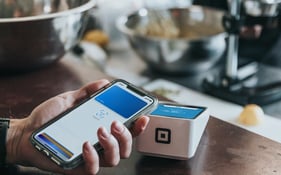Restaurant marketing strategies often focus on attracting new customers. This makes perfect sense. After all, new customers are critical to your restaurant’s growth. But there is nothing more valuable than a steady crowd of regulars. So what can you do to convert more of those new customers into regulars?
Digital marketing technology is facilitating increasingly focused and sophisticated loyalty programs for restaurants. An effective loyalty program gives you a direct line of communication to your customers, a way to keep them engaged, and an opportunity to cultivate a community of regulars.
How to Turn Customers Into Regulars
So what is this sophisticated new tool that digital marketers are using to convert new customers into regulars? Actually, it’s just good old-fashioned email. It turns out that email — with its sheer ubiquity and sneaky, in-your-pocket intimacy — remains the most powerful tool for converting the casual visitor into a potential regular.
We talked with Matt Plapp, the founder and CEO of America’s Best Restaurants and author of Restaurant Marketing That Works, to find out how restaurants are using email to convert customers into regulars.
Plapp explained that the key is for restaurants to distinguish between “advertising” and “marketing.” Advertising, he told us, is about letting people know who you are and what you offer. Marketing is more about the interaction between you and your customers. People feel bombarded by advertising in emails, text messages, and social media.
Plapp advised that it is especially important to be strategic about customer loyalty programs for restaurants. He recommends thinking beyond advertising and seeking ways to deepen your interactions.
“Most restaurants will send out 52 emails a year — one a week to their entire database,” Plapp says. “And it’ll be about them: why to come and eat at their restaurant. People don’t open those emails.”
Your restaurant marketing strategy should include a robust customer loyalty program, but it must be tailored to your brand, targeted to your audience, and responsive to real-time data. In other words, while it all starts with a good mailing list, restaurants are leveraging increasingly sophisticated digital marketing tools to get the most out of these valuable mailing lists.
5 Ways Your Customer Loyalty Program Can Drive Repeat Business
Many restaurant marketing strategies incorporate a customer loyalty program into their marketing mix. But effective customer loyalty programs for restaurants must be well-thought-out and driven by sound data.
Below are five ways that restaurants are leveraging technology to engage customers directly, enhance customer loyalty, and convert more customers into regulars.
1. Segment your database to write more specific emails
You’ve gathered hundreds, maybe thousands of email addresses through your POS and through other methods. There’s an excellent chance that your POS or your CDP will let you sort and group those addresses along some relatively simple demographics such as gender identity, marital status, income, and proximity to your restaurant.
You should be leveraging this data to create targeted restaurant marketing campaigns, identify opportunities for community-building, and distinguish your regulars from those who are simply on your email list. It’s important to engage both groups, but this type of data gathering makes it possible to differentiate your messaging.
2. Make sure you have something to say
Don’t write an email until you want to start a conversation. While regular engagement is vital, it must also be purposeful. Don’t send filler out to your customers just to remind them of your existence. People have a way of tuning out this type of promotional noise.
Effective loyalty programs for restaurants create value with each message. Spotlight changes to your menu. Promote an upcoming calendar of events. Share ways that your restaurant is contributing to the local community. And most importantly, with every message, offer your customers reasons to return to your restaurant.
3. Celebrate big events
“Information doesn’t always have to be about you.” Plapp said.
In fact, you can make a big impact on your community of customers by creating engagement that is not explicitly self-promotional. Plapp notes that, for instance, on the week of the Super Bowl, each of his restaurant clients reach out to their customer email list with a simple question—Who will win the big game?
Customers who answered were prompted to click on a chance to win a free gift card on Facebook. Plapp reported that his clients saw a 40-60% email open rate, a dramatic spike from the usual rate of 10-15%.
Participating restaurants also saw significant buzz on social media, generating hundreds of Facebook comments and driving actual sales. One of Plapp’s clients reported that the campaign led to his single best sales day in five years.
The Super Bowl happens just once a year, but special events are all over the calendar. Successful loyalty programs for restaurants take advantage of every opportunity to reach out, get people talking, and get people through the front door.
4. Leverage Texting to Broaden Your Reach
Email remains the very best way to engage your customers but it isn’t the only way. Many of your customers will be more responsive to promotions, coupons, and special offers that they receive by text.
A balanced restaurant marketing strategy should optimize outreach by establishing contact through each recipient’s preferred channel. A “smart” email-to-SMS campaign, for instance, can automatically trigger text outreach to email recipients who exhibit high non-open rates.
A third-party provider can help you create a campaign that not only provides optimized outreach through multiple channels but one that adjusts the tone, length and subject of your messaging to match the medium.
5. Once they click, make it stick
Be generous with all of your customers—regulars and infrequent guests alike. After all, everyone loves free stuff. People especially love free stuff on their birthday. Leverage your customer database to offer free entrees, cocktails, and branded merch to mark special occasions.
You’re a lot more likely to attract an infrequent customer with the promise of a complimentary steak or a martini than a coupon for 10% off. And this type of generosity can also help convert this infrequent visitor into one of your loyal regulars.
To the point of the email marketing game Plapp said, “You’re not going for visit number one. You’re going for visit two through a hundred.”
Need help refining your customer loyalty program?
Curious how a more robust customer loyalty program can improve your restaurant marketing outcomes? Schedule a chat with one of our experts to learn more!
Additional research and reporting by Cathy Stephens.
[Photo by Rendy Novantino on Unsplash]





